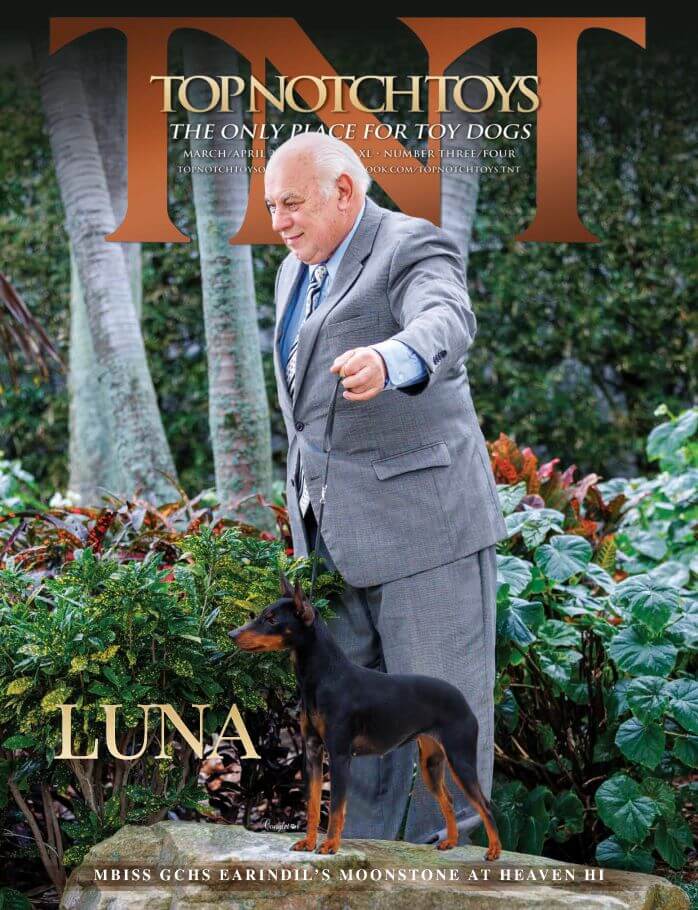Dog breeders have been using frozen semen and artificial insemination (AI) for quite some time. This process has enabled them to breed to sires in distant locales, and even to sires that have long since crossed over the Rainbow Bridge. It is certainly nothing new.
Then, in July of 2015, seven puppies were born through in vitro fertilization (IVF). This was the culmination of attempts made since the 1970s, when it was first proven successful in humans. But, the process proved more difficult in canines. Canine sperm cannot immediately fertilize an egg. The sperm have a coating that must be broken down by the chemicals in a bitch’s uterus. That chemical bath removes the coating that protects the sperm’s DNA information. It also helps the sperm to burrow into the egg so that the DNA can be deposited. In addition, bitches’ eggs are also not immediately viable. They must remain in the oviducts for some time before fertilization can take place. It took scientists many years to replicate the chemicals in the uterus and learn the correct timing necessary to create new cells, cells that could then be frozen and, later, implanted into a surrogate bitch.
In this instance, nineteen embryos were transferred to the host bitch. Of the seven that survived, five were from Beagle-Beagle pairings, and two were from Beagle-Cocker Spaniel pairings. Apparently, scientists were curious as to whether or not they could successfully cross-breed using IVF. (I am guessing the bitch herself was grateful that she did not have a litter of nineteen to care for, and I fear for any future host bitch that may find herself in that situation.)
But, our scientific accomplishments did not stop there. Since 1996, we have had the ability to clone mammals from an adult somatic cell, using the process of nuclear transfer. “Dolly” the sheep was cloned that year, after 227 failed attempts. Dolly lived for roughly half the average lifespan of a Finn Dorset, and she developed arthritis at the age of four.
This brings us to two questions: Can we clone our greatest show dogs? And, more importantly, should we?
Let’s first look at what happened when cloning was brought to another sport; polo. Aiken Cura is the name of a chestnut stallion with a white blaze, beloved by Adolfo Cambiaso, a gifted Argentinean polo player. In 2006, after an important polo championship, Aiken Cura’s left foreleg suddenly gave out and had to be amputated. Before he was forced to euthanize his stallion, Cambiaso asked a veterinarian to save a small sample of cells from the horse’s neck, freeze it, and store it in a laboratory.
Fast forward to today. Aiken Cura E01, another chestnut stallion with a white blaze, is galloping across polo fields in Argentina. He is the product of cloning technology, and he is not alone. Cambiaso partnered with two wealthy polo enthusiasts to form Crestview Genetics, and that company has created more than 70 cloned polo ponies. International polo players have been willing to pay over $120,000 to own one.
Branching out from polo to Thoroughbred racing, Crestview now has three clones that are genetic replicas of Storm Cat, who died in 2013. A descendant of Secretariat, Storm Cat once commanded a stud fee of $500,000. Three foals sired by Storm Cat were purchased by the same buyer for a total cost of $16.2 million. So, for some, the cost of a cloned descendant is not necessarily a deterrent.
Dog breeders could easily be thinking about how amazing it would be to clone one of the great ones; a BIS at a prestigious show, a Platinum Grand Champion, a dog with 100 Bests in Show or an All-Breed Ranking of Number One. They might well be thinking that having that dog in their breeding program would be a dream come true. But hold on, wait just a minute! It might just turn out to be
a nightmare.
The whole point of cloning a great show dog would be to reproduce, exactly, a dog that looked identical to the donor dog. We cannot assume, however, that this would be the case. A kitten named CC (for Copycat) was cloned in 2001. The donor was a Calico cat named Rainbow, but CC was born a black and white tiger Tabby. The two cats have the identical genetic material, so how could that be? Well, it has to do with a process called x-inactivation, which happens normally in females to prevent them from having twice as much x-chromosome activity as males.
I have seen published photos of two Aiken Cura cloned foals. They both have white blazes, but while one has a nice symmetrical blaze, the other has one with more of a zig and a zag. While this makes no difference for a polo pony, it would be very important in a conformation dog. In some standards, the wrong facial markings are actually a disqualification.
Did that great show dog have a fabulous presence in the ring? Would your new prospect have the same experiences as a pup, the same training, the same handler—even the same essential personality? If not, chances are the clone might have very different results in competition.
And how old would your new show prospect be at birth? Remember, the genetic material from the donor is taken from a mature show dog, perhaps five years old. That material will continue to age so that some genes in your newborn clone could be five years old at birth! Thus, there is a huge potential for premature aging. Based on the fact that her telomeres were short, there is some basis to believe that some genes in Dolly the sheep had a biological age of six years when she was born.
Finally, but most importantly, we need to consider the suffering of the dogs involved. Currently, a successful cloning happens in a small percentage of attempts. Think of all the pups destined to die just before birth or soon thereafter. And there is always the potential for abnormalities and deformities, such as in the case of the cloned calf born with two faces.
If, in the future, cloning technology advances to the point where it becomes affordable and feasible for dog breeders to employ, what are the ethical questions that may arise for dog show competition? Athletic organizations ban performance enhancing drugs because it takes the human/natural process out of competition.

The next time lightning strikes, thunder claps, and hailstones strike the earth, it may be a message from Terra Mater. Don’t mess with Mother Nature!











